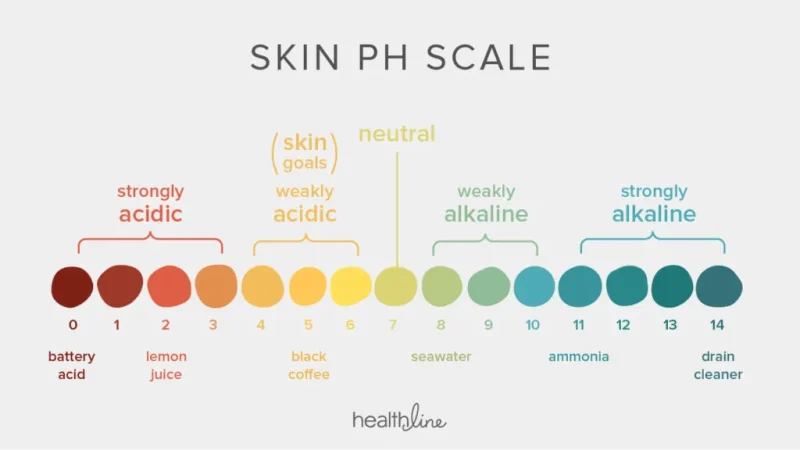Understanding and managing your skin’s health can be overwhelming, especially when dealing with persistent issues like acne, rosacea, or hyperpigmentation. That’s where skincare charts skin conditions come into play. These valuable tools provide a clear roadmap to identify, track, and treat various skin concerns effectively. By using skincare charts skin conditions, you can tailor your routine to meet your skin’s unique needs, ensuring a more targeted and successful approach to achieving and maintaining healthy, glowing skin. In this guide, we’ll explore how these charts can help you tackle persistent skin problems with confidence.
Skincare Charts Skin Conditions: Understanding Your Skin Type
Before you can tackle any skin condition, it’s crucial to understand your skin type. Skincare charts skin conditions classify skin into categories such as oily, dry, combination, and sensitive, helping you tailor your skincare routine. These charts provide a clear understanding of your skin’s needs, making it easier to choose the right products and treatments. For example, if you have oily skin, you’ll want to avoid heavy moisturisers and focus on oil-control products. By aligning your skincare regimen with your skin type, you can address persistent issues more effectively.
Skincare Charts Skin Conditions: Tracking Acne Flare-Ups
Acne is one of the most common and persistent skin conditions, affecting millions of people worldwide. Skincare charts skin conditions that track acne flare-ups can be incredibly helpful in managing this issue. These charts allow you to record the frequency, severity, and location of breakouts, helping you identify patterns and triggers. By understanding what exacerbates your acne, whether it’s diet, stress, or hormonal changes, you can take proactive steps to minimise flare-ups and improve your skin’s overall appearance.
Skincare Charts Skin Conditions: Managing Rosacea
Rosacea is a chronic skin condition characterised by redness, flushing, and visible blood vessels. Managing rosacea can be challenging, but skincare charts skin conditions designed for this issue can make a significant difference. These charts can help you identify triggers, such as certain foods, alcohol, or environmental factors, and track the effectiveness of treatments. By monitoring your skin’s reaction to different products and lifestyle changes, you can develop a personalised plan to keep rosacea under control.
Skincare Charts Skin Conditions: Addressing Hyperpigmentation
Hyperpigmentation, or the darkening of certain areas of the skin, is another common and persistent issue. Skincare charts skin conditions that focus on hyperpigmentation can guide you in selecting the right products and treatments. These charts typically include information on ingredients like vitamin C, niacinamide, and retinoids, which are known to lighten dark spots. By following a chart that outlines a step-by-step routine, you can gradually reduce the appearance of hyperpigmentation and achieve a more even skin tone.
Combating Eczema with Skincare Charts
Eczema, or atopic dermatitis, is a condition that causes the skin to become inflamed, itchy, and red. For those struggling with eczema, skincare charts can be invaluable. These charts can help you track flare-ups and identify potential irritants, such as certain fabrics, detergents, or skincare products. By using a chart to log your symptoms and triggers, you can make informed decisions about your skincare routine and lifestyle changes to minimise flare-ups and soothe your skin.
Reducing Fine Lines and Wrinkles with Skincare Charts
Ageing is a natural process, but fine lines and wrinkles can be a source of concern for many. Skincare charts that focus on anti-aging can guide you in selecting the most effective products and treatments. These charts often highlight ingredients like retinol, hyaluronic acid, and peptides, which are known for their anti-aging properties. By following a structured routine based on a skincare chart, you can minimise the appearance of fine lines and wrinkles, keeping your skin looking youthful and vibrant.
Balancing Oily Skin with Skincare Charts
Oily skin can lead to a range of issues, from acne to enlarged pores. Skincare charts designed for oily skin can help you find the right balance of products that control oil production without over-drying your skin. These charts typically recommend lightweight, oil-free moisturisers, and cleansers that contain salicylic acid or benzoyl peroxide. By adhering to a skincare routine tailored to oily skin, you can reduce shine, prevent breakouts, and maintain a clear complexion.
Soothing Sensitive Skin with Skincare Charts
Sensitive skin requires special care, as it can react negatively to a variety of products and environmental factors. Skincare charts for sensitive skin can guide you in choosing gentle, hypoallergenic products that soothe rather than irritate your skin. These charts often recommend avoiding harsh ingredients like alcohol, fragrance, and sulphates. By using a skincare chart to build a routine specifically for sensitive skin, you can minimise redness, irritation, and discomfort, leading to healthier, happier skin.
Improving Skin Texture with Skincare Charts
Uneven skin texture, such as roughness or bumps, can be difficult to treat without the right approach. Skincare charts that focus on improving skin texture can help you select exfoliating products that remove dead skin cells and smooth the skin’s surface. These charts often recommend ingredients like alpha hydroxy acids (AHAs) and beta hydroxy acids (BHAs), which are effective at refining skin texture. By following a chart that outlines a consistent exfoliation routine, you can achieve smoother, more radiant skin.
Preventing and Treating Sun Damage with Skincare Charts
Sun damage is one of the leading causes of premature ageing and skin conditions such as hyperpigmentation and skin cancer. Skincare charts that emphasise sun protection are essential for maintaining healthy skin. These charts typically highlight the importance of using broad-spectrum sunscreen with an SPF of 30 or higher, along with antioxidants that protect against free radical damage. By incorporating these recommendations into your daily routine, you can prevent further sun damage and treat existing issues more effectively.
Conclusion
Persistent skin problems can be frustrating, but with the right tools and knowledge, they can be managed effectively. Skincare charts skin conditions provide a structured approach to tackling these issues by helping you understand your skin, track your progress, and choose the best products and treatments. By incorporating these 10 effective strategies into your skincare routine, you can take control of your skin’s health and achieve the clear, radiant complexion you’ve always wanted. Remember, consistency is key, and with the help of skincare charts skin conditions, you can stay on track and see real, lasting results.
FAQs
1. What are skincare charts, skin conditions, and how do they work?
Skincare charts skin conditions are tools that help you track, manage, and treat various skin conditions. They typically include guidelines for identifying your skin type, choosing the right products, and monitoring progress over time. By following a skincare chart, you can create a personalised routine tailored to your specific skin needs.
2. How often should I update my skincare chart?
It’s recommended to update your skincare chart regularly, at least once a month. This allows you to track any changes in your skin condition and adjust your routine accordingly. If you’re dealing with a persistent issue, you may want to update the chart more frequently, such as weekly, to monitor progress closely.
3. Can skincare charts skin conditions help with multiple skin conditions at once?
Yes, skincare charts skin conditions can be adapted to address multiple skin conditions simultaneously. For example, if you have both acne and sensitive skin, you can use a chart that includes guidelines for managing both conditions. It’s important to choose products that are suitable for all your skin concerns to avoid exacerbating any issues.
4. Are skincare charts skin conditions suitable for all skin types?
Skincare charts skin conditions are designed to be versatile and can be used by individuals with different skin types. Most charts provide specific recommendations based on whether your skin is oily, dry, combination, or sensitive. By selecting a chart that aligns with your skin type, you can create an effective routine that meets your unique needs.
5. Where can I find reliable skincare charts of skin conditions?
Reliable skincare charts skin conditions can be found online through dermatology websites, skincare blogs, and health resources. Many reputable skincare brands also offer customized charts based on your skin type and concerns. It’s important to choose charts from trusted sources to ensure you’re following accurate and safe recommendations.
Also read: Julio Urías Wife: 10 Heartwarming Moments They’ve Shared





